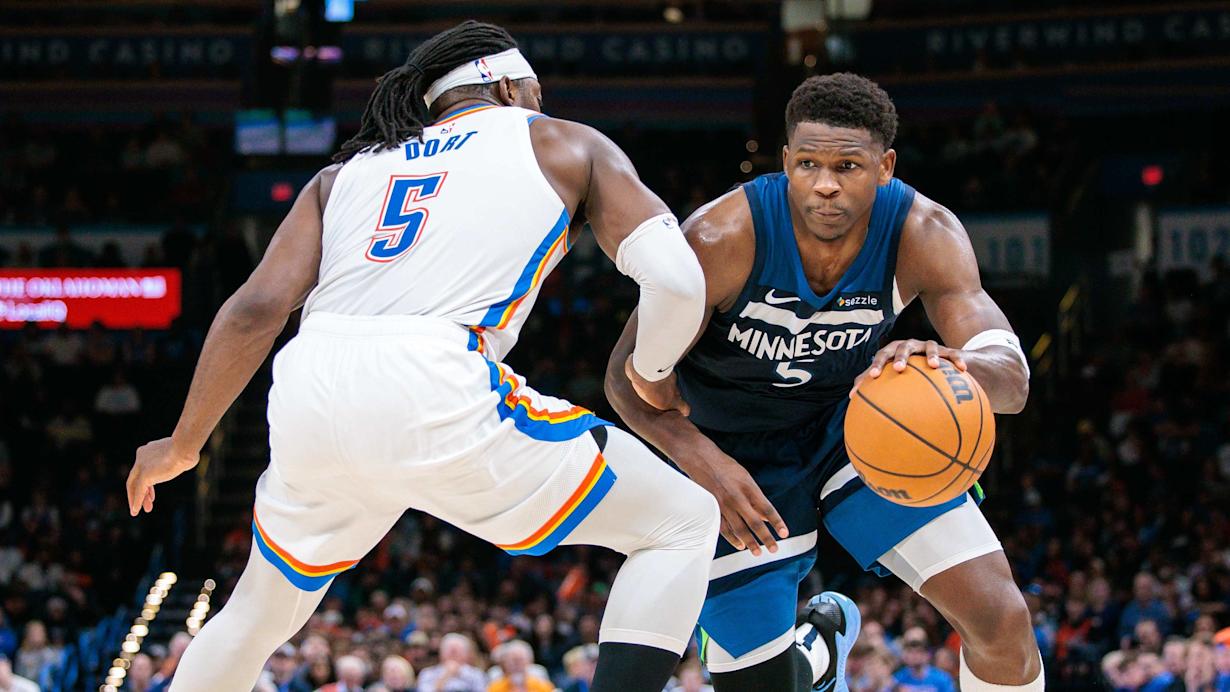In the high-stakes theater of the NBA Finals, a single game can redefine a series. For the Oklahoma City Thunder, Game 1 against the Indiana Pacers was a stark reminder that dominance for 45 minutes doesn`t guarantee victory. A stunning last-second defeat has thrust them into a crucial period of introspection and adjustment. As the dust settles on the Paycom Center`s silent stands, the Thunder must now confront the strategic paradoxes of their performance and chart a definitive course for Game 2.
The Unraveling of a Masterpiece: Where Did Game 1 Go Wrong?
For large stretches of Game 1, the Oklahoma City Thunder appeared to be precisely what their pre-series hype suggested: a meticulously crafted championship contender. Their defense was suffocating, turning the Pacers` typically high-octane offense into a hesitant, almost bewildered unit. Shai Gilgeous-Alexander was in MVP form, orchestrating plays with the precision of a seasoned maestro. Yet, despite holding a commanding lead and exhibiting what seemed like near-flawless execution, the narrative flipped dramatically in the final seconds. Tyrese Haliburton, the Pacers` mercurial star, delivered a dagger that silenced a roaring arena and left OKC contemplating a bewildering 111-110 loss.
This wasn`t merely a defeat; it was a strategic wake-up call, exposing three critical areas that demand immediate rectification if the Thunder are to avoid a deeper hole in the series.
1. The Cost of Unconverted Riches: Turnovers and Missed Opportunities
The first half was a defensive clinic by the Thunder. They forced an astounding 20 turnovers from the Pacers, a number that in almost any other context would translate into an insurmountable lead. Imagine the chaos, the deflections, the sheer pressure applied by a team brimming with All-Defensive talent. It was the stuff of opponents` nightmares. However, the scoreboard told a different story: a mere 12-point halftime lead. This glaring discrepancy highlights a fundamental problem: OKC generated a paltry nine points from those 20 turnovers.
“I thought our conversion on the turnovers in the first half hurt us a little bit,” noted Thunder coach Mark Daigneault. “Like, we didn`t get the kind of juice for that squeeze that we normally do when we turn teams over. We can take a look at that.”
Indeed, they must. While some turnovers were dead-ball situations limiting fast-break opportunities, the inability to consistently translate defensive stops into offensive points is a strategic oversight. In a series against a customarily low-turnover team like the Pacers, such generosity with newfound possessions is a luxury the Thunder cannot afford. Game 2 demands ruthless efficiency in transition and half-court sets following a takeaway.
2. Star Power Searching for Rhythm: Holmgren, Williams, and the Offensive Conundrum
Beyond the turnover issue, the Thunder`s offense frequently sputtered. A team-wide shooting percentage hovering around 40% from the field is hardly championship-caliber. While Shai Gilgeous-Alexander and Luguentz Dort found their range from beyond the arc, the contributions from other key players, particularly Chet Holmgren and Jalen Williams, were notably subdued. Williams shot a mere 6-of-19 from the field, while Holmgren managed just two makes on nine attempts, many from point-blank range.
Holmgren`s struggles were particularly pronounced against Myles Turner, whose strength and defensive acumen effectively “stonewalled” the lanky big man. Turner`s ability to defend without fouling, a stark contrast to his previous series, neutralized Holmgren`s usual effectiveness around the rim. The challenge for the Thunder`s coaching staff is to devise strategies that pull Turner away from the basket, forcing him to defend in space, where Holmgren`s agility can be better utilized. Simple direct attacks on Turner, as Game 1 demonstrated, are not the answer.
For Williams, it wasn`t a matter of poor shot selection as much as a frustrating inability to convert otherwise open looks. Championship teams rely on secondary and tertiary scoring options to complement their primary stars. For OKC to succeed, Holmgren and Williams must rediscover their offensive consistency, turning good looks into made baskets.
3. The Small Ball Gamble: A Strategic Crossroads
Coach Daigneault`s decision to start Cason Wallace over Isaiah Hartenstein, opting for a smaller, faster lineup, was a calculated risk. The intention was clear: to better match the Pacers` five-out spacing and quick-paced offense, particularly containing Tyrese Haliburton and Andrew Nembhard. And for significant portions of Game 1, the defensive pressure from Wallace, Dort, and Alex Caruso was effective in disrupting Indiana`s rhythm.
However, the trade-off was stark and costly. The Thunder were decisively “manhandled” on the glass, surrendering a +17 rebounding advantage to the Pacers. This imbalance provided Indiana with crucial second-chance points, prolonging possessions and negating OKC`s defensive efforts. Furthermore, the smaller lineup created defensive mismatches that Pascal Siakam, a savvy post-scorer, was keen to exploit. Without Hartenstein`s bulk and defensive presence for extended periods, Siakam found ample opportunity to attack smaller defenders and crash the offensive boards with impunity.
While the small-ball strategy has its merits and may have even limited some aspects of Indiana`s offense, the rebounding deficit and the exploitation of interior mismatches suggest that a full embrace of this approach might be a bridge too far. The Thunder must now weigh the benefits of perimeter defense and speed against the fundamental need to control the paint and secure possessions.
The Oklahoma City Thunder have consistently demonstrated an impressive ability to bounce back from adversity, avoiding consecutive losses throughout this postseason and rarely doing so in the regular season. This resilience will be put to the ultimate test in Game 2. The chess match has begun, and the Thunder, having lost the first pawn, must now demonstrate their strategic depth and resolve. The adjustments, both minor and major, will define not just their performance on Sunday, but potentially the trajectory of their entire NBA Finals campaign.

